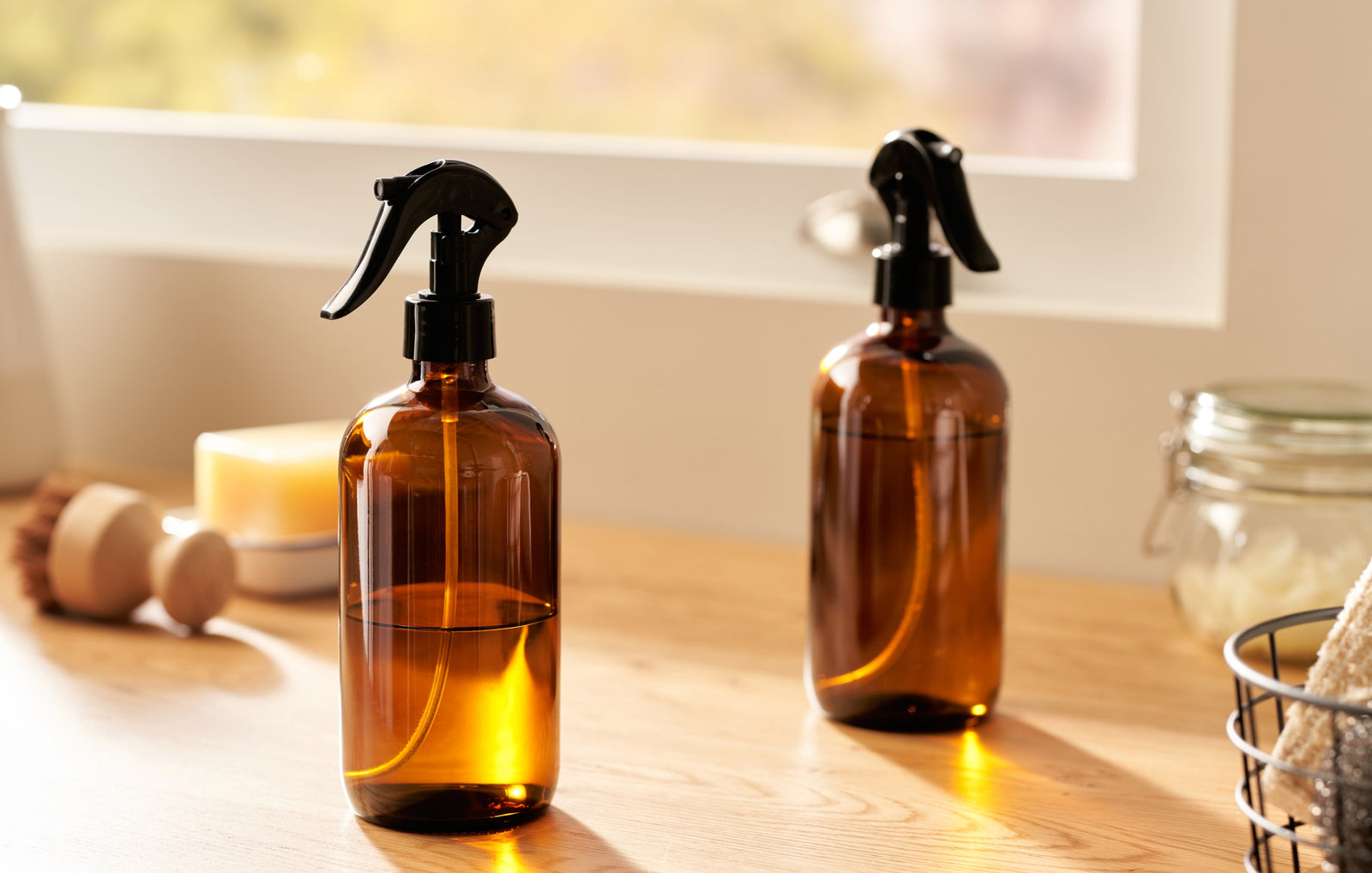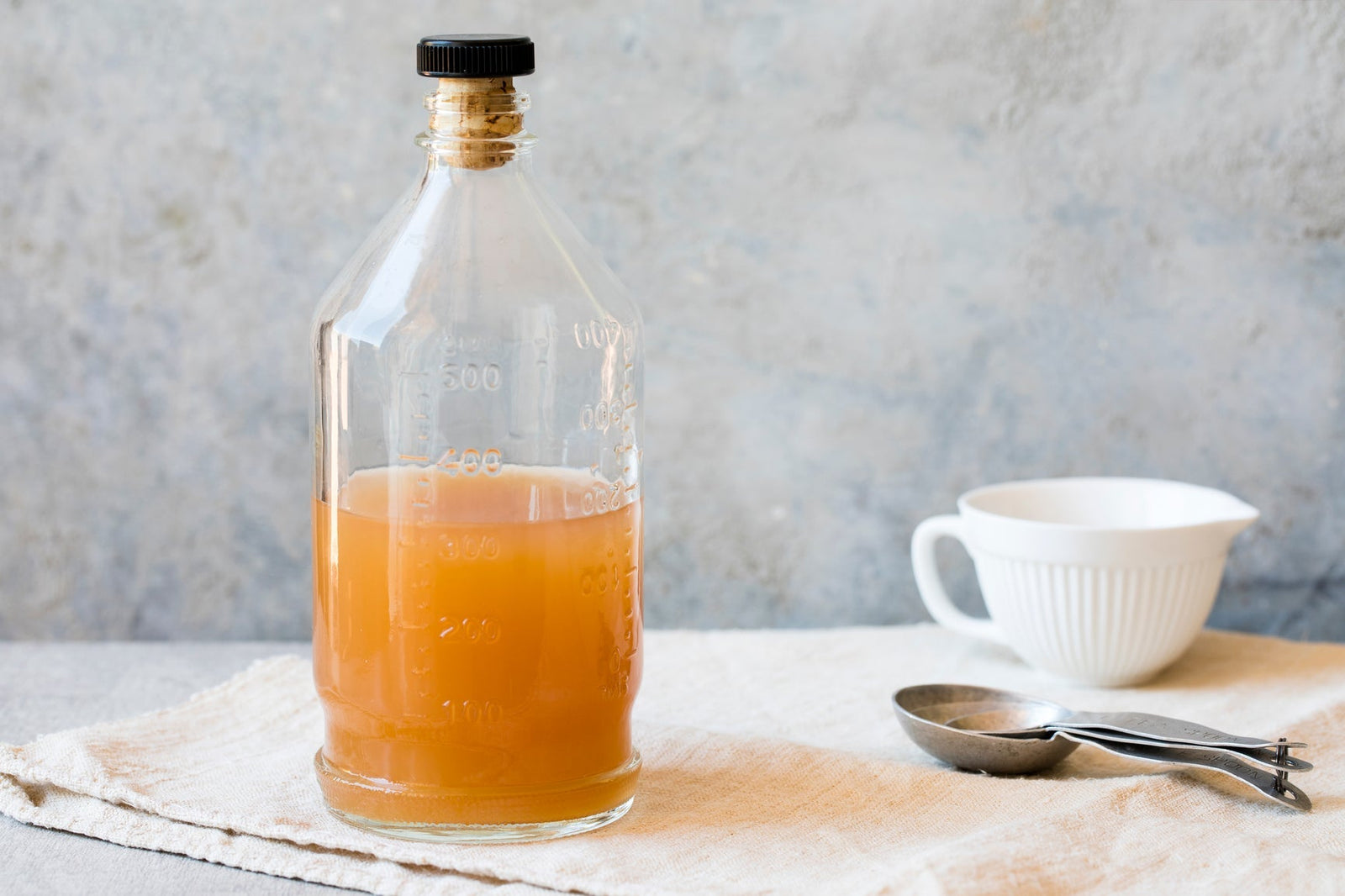Cleaning Vinegar vs. White Vinegar: What’s The Difference? | Branch Basics

If you love cleaning with vinegar (like we do), you’ve probably noticed cleaning vinegar is now more widely available.
But wait…isn’t all vinegar good for natural cleaning?
Yes and no.
Although distilled white vinegar, apple cider vinegar, and cleaning vinegar are excellent natural cleaners and mild sanitizers, we wouldn’t recommend cleaning with balsamic or red wine vinegar.
Further, cleaning vinegar has some distinctive characteristics that make it an ideal choice in certain situations.
Here, we share the differences between cleaning vinegar and white vinegar and how to use them to clean your home safely and effectively.
The Differences Between Cleaning Vinegar vs. White Vinegar
If you’ve been using white vinegar to clean and are wondering if you should use cleaning vinegar instead, the answer is probably not.
Here’s why.
The only difference between the two is that cleaning vinegar contains a higher concentration of acetic acid, the natural ingredient in all kinds of vinegar that makes them effective at cutting through dirt, grease, and grime. It’s also what causes lung irritation (when sprayed) and gives vinegar its signature sour taste.
They are both made using the same fermentation process and raw materials. The cleaning vinegar just contains less water.
Cleaning Vinegar Vs. White Vinegar Difference #1: Cleaning vinegar contains 6-8% acetic acid while regular distilled white vinegar contains 5%
This extra 1-2% acetic acid makes cleaning vinegar tougher on dirt and grease but unsuitable for consumption.
Note: We don’t recommend consuming distilled white vinegar either due to its source and packaging (it’s typically sourced from GMO corn, and its acidity likely breaks down its plastic packages, resulting in microplastic contamination of the vinegar).
Cleaning Vinegar Vs. White Vinegar Difference #2: Cleaning vinegar may be more suitable for specific tasks
Although either type of vinegar is excellent for everyday cleaning, cleaning vinegar’s stronger acetic acid content may make it easier to remove tough messes, such as soap scum, limescale, or stains.
If we were charged with cleaning a shower door that hadn’t been cleaned in months, for example, we would likely reach for undiluted cleaning vinegar vs. plain distilled white vinegar.
Both would work, but cleaning vinegar would work faster with less scrubbing.
Cleaning Vinegar Versus White Vinegar Difference #3: Cleaning Vinegar May Be More Irritating To Babies, Young Children, Or Those With Respiratory Issues
Every article we’ve written about cleaning with vinegar contains a variation of the same warning statement:
Although vinegar is a natural product, it contains acetic acid, a respiratory irritant when made airborne by spraying. Ventilate when cleaning! If you’re sensitive, have a respiratory condition, babies or young children in the house, etc., opt for another human-safe cleaning option.
This is true for regular vinegars but especially for cleaning vinegar due to its enhanced acetic acid concentration.
Uses for Cleaning Vinegar
You can use cleaning vinegar in all the same ways as regular distilled white vinegar.
Here are some examples of where it really shines.
Deep Cleaning Surfaces
Cleaning vinegar has a leg up on regular vinegar for deep cleaning surfaces, especially those with stains or caked-on grease and grime.
Cleaning vinegar is safe to use undiluted on most surfaces, or you may choose to dilute it 50:50 for more versatility.
Do not use cleaning vinegar on the following surfaces:
- Stainless steel
- Wood or butcher block
- Natural stone
- Marble
- Porous surfaces
Cleaning vinegar may also be used as part of the cleaning process where the first step is always to use soap and water to remove dirt, grease, and grim. Then, if desired, use our natural disinfectant protocol which utilizes either distilled white vinegar or cleaning vinegar and peroxide, used separately (spray one, wipe off, spray the other, wipe off) and stored in separate bottles.
Get more tips in: 8 Best Natural Disinfectants For Everyday Use
Stain and Odor Removal
We love using vinegar as a natural stain remover and cleaning vinegar is no exception.
It’s high acetic acid content is especially good for lifting tough stains and eliminating odors.
Using cleaning vinegar on stains:
Cleaning vinegar neat
This method is recommended for fresh stains on white or light clothing
- Blot up as much of the stain as possible and rinse.
- Apply undiluted cleaning vinegar of cleaning vinegar mixed 1:1 with water directly to the stain.
- Agitate with a brush or rub fabric together until the stain disappears or begins to lift.
- Rise or remove and repeat if necessary until the stain disappears.
- Get more natural stain removal tips in: Top 7 Natural And Reliable Laundry Stain Removers
To use cleaning vinegar for odors:
- For clothing, add 1/2 to 1 cup cleaning vinegar to your rinse cycle and launder as usual.
- The vinegar smell will come out with rinsing and drying.
- Note: Only use vinegar in the rinse cycle and do not mix vinegar with the laundry soap as the vinegar neutralizes the cleaning capacity of alkaline laundry products..
- For more tips on removing odors naturally, see:
Discover more ways to eliminate odors from clothing and indoors, in: 7 Non-Toxic Air Fresheners And How To Remove Odors Naturally
Cleaning Soap Scum And Hard Water Stains On Glass
Plain distilled vinegar will work on soap scum and hard water stains, but cleaning vinegar will work faster.
Here’s how to use it:
- Ventilate the bathroom well using the exhaust fan and/or opening windows.
- Clean the shower door with Branch Basics Streak-Free or your favorite natural glass cleaner.
- Next, spray with undiluted cleaning vinegar and let sit for at least 5-30 minutes.
- Wipe clean.
When To Avoid Using Cleaning Vinegar
Most cleaning vinegar has 6% acidity, making it about 20% stronger than distilled white vinegar.
The increased acidity makes it wonderful for cleaning most, but not all, surfaces.
You should not use cleaning vinegar on the following:
- Marble
- Granite
- Natural stone
- Porous or unfinished surfaces
- Wood floors
- Wood cabinets
- Cast iron
- Stainless steel
- Rubber gaskets and hoses
- Electronics
- Grout
- Silk
- Wool
Cleaning vinegar is also not food-grade and must not be consumed or used on produce.
Cleaning vinegar and distilled vinegar must not be mixed with other household cleaners, especially bleach or peroxide, as the combination will create a toxic gas.
Finally, as mentioned previously, we do not recommend using vinegar as a spray around babies, young children, or anyone with a respiratory condition.
Cleaning Vinegar FAQs
We’ve covered the basics, so let’s dive into some cleaning vinegar FAQs.
Is Cleaning Vinegar Safe To Consume?
No. As mentioned earlier, cleaning vinegar is not food-grade vinegar, is not designed for consumption, and can cause harm if swallowed.
As such, we do not recommend using it on produce as a spray or a soak.
Branch Basics All-Purpose, Foaming Wash, or regular distilled vinegar all make excellent produce washes.
Can I Use Cleaning Vinegar In Laundry?
Absolutely! Like plain white vinegar, cleaning vinegar can be used in the rinse cycle for stain removal, mild sanitizing (vinegar has been shown effective against some types of pathogens such as E. Coli, Salmonella, and Listeria), fabric softening, and as a bleach alternative.,
Related reading:
Is Cleaning Vinegar Necessary For Everyday Cleaning?
No, but it is a good natural and low-tox choice.
We like to keep some around for really tough jobs, but generally use plain distilled vinegar for everyday cleaning
How Should I Store Cleaning Vinegar?
Cleaning vinegar should be stored away from the kitchen to reduce the chance it’s accidentally used in or on foods.
Store in its original container with your other cleaning supplies out of reach of children and pets.
What Other Safety Precautions Should I Take When Using Cleaning Vinegar?
Since cleaning vinegar is highly acidic, we recommend using rubber gloves to avoid skin irritation.
Do not use around children or pets as it is highly irritating to the eyes, can irritate the skin and lungs, and cause damage if ingested.
Cleaning vinegar can be diluted 50:50 with water to reduce its harshness.
As mentioned previously, never mix with bleach or peroxide, and ventilate your home very well to avoid lung irritation from the acetic acid.
Toss The Toxins With Branch Basics
We love using white vinegar and cleaning vinegar as part of our natural cleaning routine.
We also love peroxide, lemon juice, castile soap, baking soda, dry steam cleaners, and (of course) Branch Basics.
Branch Basics Starter Kits help simplify natural low-tox cleaning by using one plant and mineral-based Concentrate to replace every single synthetic chemical cleaning and laundry product in the home.
Just add Branch Basics Concentrate plus the recommended amount of water to our refillable glass or plastic bottles to make All-Purpose, Streak-Free, Bathroom, Laundry, Foaming Wash, and custom dilutions.
All ingredients in our Concentrate are rated 1-2 on EWG. It is Made Safe Certified, Leaping Bunny Certified, and ideal for the most sensitive skin and people, even those who cannot tolerate acetic acid.
To learn more about our all-in-one cleaning system, check out: How To Get Started With Your Branch Basics Kit
For more information on natural cleaning and disinfecting, see:
Categories

Marilee Nelson
Marilee Nelson is an Environmental Toxins expert who has spent nearly 30 years advocating for the chemically-sensitive and chronically-ill. She is a Board Certified Nutritionist, Certified Bau-Biologist and Bau-Biology Inspector and specializes in Food As Medicine. She has helped thousands of families and individuals identify, heal and recover from toxic exposures and is on a mission to revolutionize the way American families view their health.







